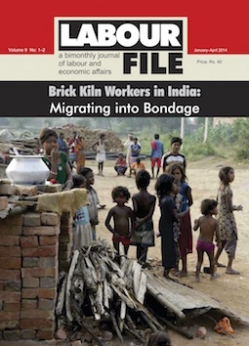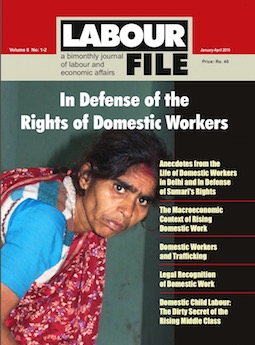SEZ: Corporate Statehood Defined
C R Bijoy is writer and activist associated with Campaign for Survival and Dignity, a coalition of struggle based mass organisations of forest dwellers. Email: cr.bijoy@gmail.com. (CR Bijoy)
The SEZ Act heralds the integration of the powers of the executive, the elected institutions and the judiciary, centralised in the SEZ Authoritythe Development Commissioner (DC) and/or the developer (company)paving the way for the creation of a political and economic entity, separate from the Indian state. SEZs internally are structured for the establishment of authoritarian capitalism with the Indian state as an instrument of capital.
Imagine state-sanctioned-and-protected small and mid-sized cities built, operated, owned and governed by `developers` scattered all over the country. Imagine…no elected local government to bother about…heavily state subsidised, export-oriented economic enclaves, ostensibly to generate foreign exchange and foreign investment; insulated, free and secure from the vagaries of the rest of the already liberalised economy…a walled-in heavily guarded enclosure with businesses, residences and entries strictly defined, regulated and controlled by an `Authority` that also controls and regulates provision of all goods and services within these enclaves including water, electricity, communication and transportation, provision of essential and consumer goods, health, education, housing, sanitation, finance, entertainment and culture. With subjects as revenue, internal security, law and order and the justice system falling within the scope of the `Authority`, the picture is almost completethe establishment of `corporate states` or sovereign corporate-owned private states, except in matters of defence and foreign affairs. The Special Economic Zones Act 2005 has within it all that is necessary for the conception of such political entities.
Redefining the Governance Structure
Though the SEZ Act and its rules do not specify this, the Model SEZ Policy advocated by the central government for the state governments states that: “The State Government will declare SEZ as an Industrial Township and if necessary, relevant Acts would be amended so that SEZ can function as a governing and autonomous body as provided under Article 243(Q) of the Constitution.” (Item 10) In line with this, and because local governance is in the State List (List II of Seventh Schedule of the Constitution), various state policies on SEZs such as those in Andhra Pradesh, Gujarat, Jharkhand, Karnataka, Kerala, Madhya Pradesh, Orissa, Rajasthan, Tamil Nadu, Uttar Pradesh and West Bengal envisage the notification of these zones by the governors of the respective states as `industrial townships` under Article 243Q of the Constitution. This exempts them from the provisions of Part IX of the Constitution, which provides for elected local governments, that is, municipalities. Instead, an industrial township authority is constituted having the same powers and duties as a municipal body with nominees from the developer and the state government, with powers including licensing, the provision of infrastructure and planning. The developer constructs the zone and, effectively, controls the local government.
Further, the SEZ Act provides for the creation of an SEZ Authority (sub-section 1 of section 31), headed by a government-appointed DC for one or more SEZs (sub-section 1 of section 11), who will govern the zone, primarily to facilitate economic growth. The DC may be assigned additional powers and functions by the Board of Approval (subsection 4 of section 9). The central government can also modify or repeal any central law and any rules or regulations by mere notification in its application to the SEZs, with the exception of “matters relating to trade unions, industrial and labour disputes welfare of labour including conditions of work, provident fund, employers` liability, workmen`s compensation, invalidity and old age pension and maternity benefits applicable in any Special Economic Zone” (section 49), including any provisions of SEZ Act other than sections 54 (power to add to omit any enactment provided in the First Schedule of the Act containing a list of enactments for payment of taxes, duties or cess) and 56 (power of the central government to remove difficulties in operationalisation of the provisions of the Act). This section gives overriding power to the central government over the Parliament and the state governments in empowering SEZ Authority. The state governments are, by law, to make available water, electricity (uninterrupted) and such other services to the proposed SEZ units and developer (rules d of 5).
Together with the industrial township authority, the governance structure ties the central and state governments to the developer as instruments of its legitimacy and power.
Governance Defined
The powers of the DC include provision of infrastructure and public services by agreement with the developer (subsection 11 of section 3). There shall be no investigation, search or seizure in an SEZ by any agency or officer without the permission of the DC (section 22) except in the case of offenses notified by the central government (section 21). Even in the case of `notified offenses`, the DC is to be intimated (section 22). Further, both civil and criminal matters and any `notified offence` falling within the zone are to be tried only by the special courts set up in SEZs (section 23). The High Court of the state can hear appeals from these special courts (section 24). Put together, a separate investigative and judicial process is in place in which the DC plays a critical role in influencing the outcome. State policies also envisage `separate and exclusive arrangements` for `law and order and control of crime` within SEZs. The policing and justice system are sought to be brought under the influence and control of the SEZ Authority.
Every person, whether employed, residing or required to be present in an SEZ, is to be provided an identity card by the DC (section 46), which will be used to regulate `the entry of persons to the processing area` of the SEZ (rule 70). The processing area and Free Trade and Warehousing Zone are to be fully secure, with specified entry and exit points (rule 2 of 11). The processing area is, moreover, accessible to `authorized persons` only (rule 4 of 11). The importance given to securing the zone physically as well as determining who can enter and leave indicates the intention of tight control within and isolation from without.
Whereas the zones are not exempt from the application of labour laws, which are anyway flouted in the normal course, the DC, who virtually controls life within the zones, the work, personal, social and political space, is, in addition, designated as the Labour Commissioner. By declaring the SEZs as `public utility service` under the Industrial Disputes Act 1947 and the delegation of powers to the DC under the Industrial Disputes Act and other related Acts, dissent, trade union activities, democratic rights to protest and labour rights are under tight leash, if not extinguished; if at all present, these are to be mere concessions. Further, the Model Policy advises exemption from the Contract Labour (Regulation and Abolition) Act 1970 and Minimum Wages Act 1948, licensing the widespread use of contract labour system. This seeks to complete the project of informalisation of work and casualisation of employment, ensuring a shift to preponderance of casual positions from full-time and permanent or contract positions to ensure sustained depression of wages, a critical factor for super profit generation.
The establishment of these privileged secure enclaves will, in turn, spill over into the surrounding regions. These will rapidly become captive peripheries, sub-serving the needs of the zones, colonising and diverting the livelihood resources primarily land and other natural resources of the people, through their take-over and conversion by real estate speculators, service providers, traders and businesses.
Title of the Article: SEZ: Corporate Statehood Defined
Name of the Journal: Labour File
Volume & Issue: 6 , 5
Year of Publication: 2008
Month of Publication: July - October
Page numbers in Printed version: Labour File, Vol.6-No.4&5, Special Economic Zones: Their Impact on Labour (Article - SEZ: Corporate Statehood Defined - pp 22 - 24)
Weblink : https://labourfile.com:443/section-detail.php?aid=637




.jpg)
.jpg)


